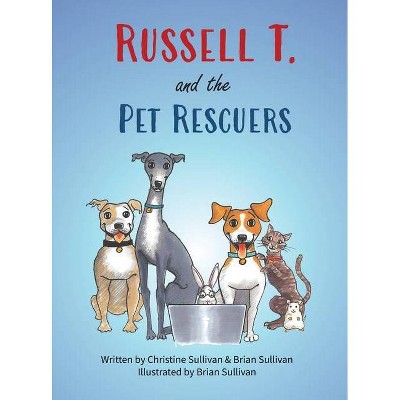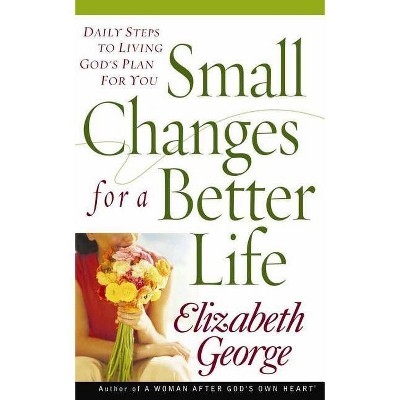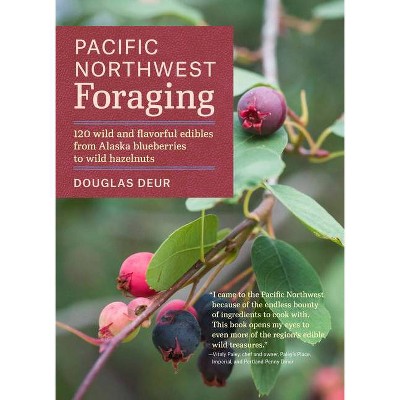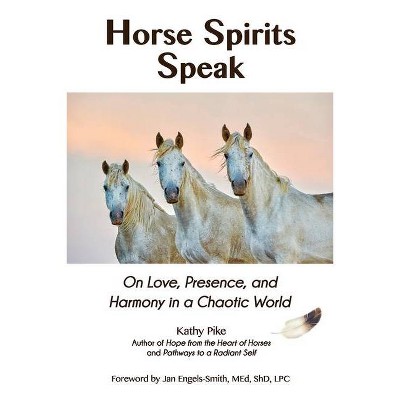Better Birding - by George L Armistead & Brian L Sullivan (Paperback)

Similar Products
Products of same category from the store
AllProduct info
<p/><br></br><p><b> About the Book </b></p></br></br>"Reveals the techniques expert birders use to identify a wide array of bird species in the field ... Featuring hundreds of ... photos and composite plates throughout, this book simplifies identification by organizing the birds you see into groupings and offering strategies specifically tailored to each group. Skill-building focuses not just on traditional elements such as plumage, but also on creating a context around each bird, including habitat, behavior, and taxonomy"--Page 4 of cover.<p/><br></br><p><b> Book Synopsis </b></p></br></br><p><b>How to go from a beginner to an expert birder</b> <p/><i>Better Birding</i> reveals the techniques expert birders use to identify a wide array of bird species in the field--quickly and easily. Featuring hundreds of stunning photos and composite plates throughout, this book simplifies identification by organizing the birds you see into groupings and offering strategies specifically tailored to each group. Skill building focuses not just on traditional elements such as plumage, but also on creating a context around each bird, including habitat, behavior, and taxonomy--parts so integral to every bird's identity but often glossed over by typical field guides. Critical background information is provided for each group, enabling you to approach bird identification with a wide-angle view, using your eyes, brain, and binoculars more strategically, resulting in a more organized approach to learning birds. <p/><i>Better Birding</i> puts the thrill of expert bird identification within your reach.<br></p><ul><li>Reveals the techniques used by expert birders for quick and easy identification</li><li>Simplifies identification with strategies tailored to different groupings of birds</li><li>Features hundreds of photos and composite plates that illustrate the different techniques</li><li>Fosters a wide-angle approach to field birding</li><li>Provides a foundation for building stronger birding skills</li></ul><p/><br></br><p><b> From the Back Cover </b></p></br></br><p>"This guide is an outstanding reference and a valuable contribution for birders at all levels. The format is reader friendly and the illustrations are stunning."<b>--Wayne Petersen, director of Mass Audubon's Important Bird Area Program</b></p><p/><br></br><p><b> Review Quotes </b></p></br></br><br><i>Better Birding</i> provides a thoughtful and holistic approach to bird identification that often is missing from traditional field guides.<b>---Stephen J. Dinsmore, <i>Prairie Naturalist</i></b><br><br>An excellent book. . . . Sullivan and Armistead are two of the best birders in the country, each advancing the ways we understand and enjoy birds. . . . The introductory material . . . is particularly strong. . . . The book is richly illustrated with stunning photographs accompanied by concise and informative captions.<b>---Christopher Wood, Program Leader for ebird at Cornell Lab of Ornithology, <i></i></b><br><br>Before I go any further let me mention the gorgeous photographs in this book (e.g. check out the breeding plumage Pacific Loon on page 28. Wow!). As a person who loves to look at beautiful birds, I enjoy this element of the book greatly. If you do nothing else but read the Introduction to tile book, you will learn things to help you identify more birds.<b>---William Saur, <i>The Passionate Birder</i></b><br><br>I'm hoping there's a sequel. . . . The writing is clear, concise, and witty when it needs to be. The photographs couldn't be any better. In short, I can't think of a good reason not to have this book.<b>---Kirby Adams, <i>National Parks Traveler</i></b><br><br>One of Audubon's 12 Best Bird Books of 2015<br><br>One of The London Free Press' "Great flock of birding books 2015"<br><br>The authors have written a book that provides a new avenue of exploration for the fine-tuning of our birding skills. . . . A valuable addition to the library of the birder, ornithologist, and natural history student.<b>---Howard O. Clark, Jr., <i>Western North American Naturalist</i></b><br><br>The book covers some water birds and hawks, wrens, flycatchers, swifts and more, but wisely confines itself to groups of birds involving relatively few species. Each section includes numerous photographs and in some cases composite photo illustrations for comparisons. The accounts also include distribution maps.<b>---Tom Palmer, <i>Lakeland Ledger</i></b><br><br>The first 27 pages of <i>Better Birding</i> should be required reading for students of Birding 101. . . . The writing is clear, concise, and witty when it needs to be. The photographs couldn't be any better. In short, I can't think of a good reason not to have this book.<b>---Kirby Adams, <i>National Parks Traveler</i></b><br><br>The writing is . . . accessible but full of new observations about birds whose identification I haven't thought about thoroughly or critically enough in many cases. . . . This latest addition to the arsenal combines not just the finer points of identification (many of these original or obscure) but also a fresh way to look at some really wonderful sets of birds. . . . The approach is a holistic one, a very fresh and modern one, and it's the closest book I've seen that hints at how hardcore birders approach a day's birding in terms of hopes and expectations as well as identifications. In the end, it's the sharp photography that sells this book. Mouthwatering images.<b>---Edward S. Brinkley, author of, <i>National Wildlife Federation Guide to Birds of North America</i></b><br><br>This book is extremely well conceptualized. As you read the text it becomes obvious it is written by two experts in the field, and the plates showing side-by-side comparisons of similar-looking species are brilliantly laid out. Since I am a raptor enthusiast, I read the accipiter section first, and was impressed with the level of detail geared towards field ID written in an easy to understand way!<b>---Jerry Liguori, author of, <i>Hawks from Every Angle</i></b><br><br>This richly illustrated volume provides numerous insights into enhancing one's experience of birding. . . . Any library with readers interested in birds and birding should certainly acquire this volume, priced incredibly low for a work full of color photography. Academic libraries supporting programs in zoology or ornithology should also consider it.<b>---Mark Schumacher, <i>ARBA</i></b><br><br>Want to be a real birder but don't know how to sharpen your skills? This book will teach you how to identify birds with ease and speed. George Armistead and Brian Sullivan share expert techniques for ID-ing different groups of birds. The book also shows how habitat and behavior can be used as crucial tools for birding.<b>---Emily Silber, Audubon.com, <i></i></b><br><br><i>Better Birding</i> . . . fills a niche, presenting detailed discussions of bird groups that are not 'sexy' enough to have their own guides, often falling through the cracks of avian publishing, but which pose identification puzzles in the field for even the most experienced birders. . . . The writing style is friendly, expansive, scientifically informed, and draws distinctive pictures of each species.<b>---Donna Schulman, <i>10,000 Birds</i></b><br><br><i>Better Birding</i> provides readers with the ability to confidently identify what they are see. Through clear descriptions and by presenting each bird with a history, learning about them through their life story makes the study enjoyable. <i>Better Birding</i> inspires us to make sound identification through the clarity of its descriptions and compelling profiles. This book makes keeping my resolution to be a better birder something I know I can do in the year ahead.-- "Constantly Explore"<br><br>[A] serious, immensely informative book. . . . The book is like an expertly guided tour--one that visits wetlands, open country, waterways, forests, shores, and other habitats from Alaska and the Pacific coast to Florida's Dry Tortugas and the Gulf Stream waters off Cape Hatteras, making clear, along the way, what members of each group have in common and how they differ, and, indeed, why each bird is.-- "BirdWatching Magazine"<br><br>Aimed at advanced birders, the book offers new ways to think about identifying selected groups of species. . . . This is a lovely book; it is profusely illustrated with color photographs, a number of which show various views of similar bird species in flight on two-page spreads.-- "Choice"<br><br>Crisp photography, with side-by-side composite comparisons of similar species accompany detailed, easy-to-read text. The hundreds of photos are nearly worth the price of the book on their own. Above all, <i>Better Birding</i> was a fun read. Engaging, text hits the mark of being specific, but not overly technical. Photos bring birds to life, and show salient identification points described in the text.-- "Carolina Bird Club Newsletter"<br><br>I have read the volume with an appetite I can't quite satisfy. Tips and techniques to becoming a better birder abound as photos and text combine to paint clear pictures of what it takes to improve your birding skills. A great read full of great info!-- "North Durham Nature Newsletter"<br><br>It comes as no surprise that <i>Better Birding</i> is unashamedly directed towards a North American audience. Yet because the book is devoted to better ID techniques of bird families shared across the Northern Hemisphere or vagrant species which show up on either side of the Atlantic Ocean, many of the chapters contain pages of undoubted interest to a UK audience. . . . The authors should be congratulated in sticking to their chosen parameters and not falling into the trap of producing yet another full field guide to North American birds but instead focusing on/singling out a number of bird groups worthy of special mention.-- "Another Bird"<br><br>Providing a foundation to improve readers' birdwatching abilities, the authors furthermore explain why birding is cool. Recommended for all readers who wish to become better birders.-- "Library Journal"<br><br>So will <i>Better Birding</i> actually help you to be a better birder? Yes, it certainly can. Intermediate birders, especially, will find it extremely useful. And anyone, experts included, should get it if it covers a group you'd like help with.-- "Birders Library"<br><br>The very readable text is dense and replete with species information and advice on what one can see by taking a wider perspective while birding. . . . [T]his is a well-produced reference for the novice and expert birder alike.-- "Booklist"<br><br>This book, written by George Armistead and Brian Sullivan, is a refreshed approach to species identification. While most field guides focus primarily on plumage, this approach is 'wide angled' and more holistic with habitat, behavior, and other contextual elements coming into play.-- "London Free Press"<br><p/><br></br><p><b> About the Author </b></p></br></br><b>George L. Armistead</b> is events coordinator at the American Birding Association and a research associate in the Ornithology Department at the Academy of Natural Sciences of Drexel University. He has led birding tours on all seven continents. <b>Brian L. Sullivan</b> is eBird program codirector and photographic editor for Birds of North America Online at the Cornell Lab of Ornithology. He is the author of numerous papers on bird identification and the coauthor of <i>The Crossley ID Guide: Raptors</i> and <i>Offshore Sea Life ID Guide: West Coast</i> (both Princeton).
Price History
Price Archive shows prices from various stores, lets you see history and find the cheapest. There is no actual sale on the website. For all support, inquiry and suggestion messagescommunication@pricearchive.us




















